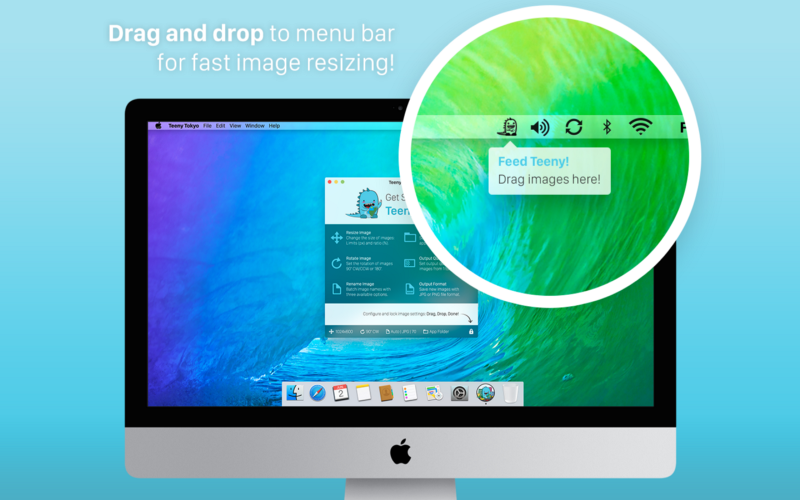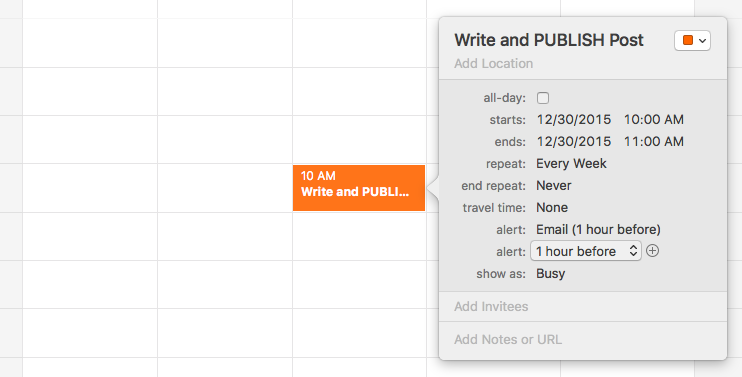By John Saddington
Building stuff can be hard. But as designers, developers, and business builders, it’s one of the most satisfying things that we get to do. When we get to share those creations with others we get to share our joy en masse. This enhances our own personal pleasure. Thus it becomes a virtuous cycle that creates value for everyone involved.
But for many of us the challenge isn’t with the building, it’s with the sharing part that we struggle with the most. Because, for whatever reason, we feel like a great product, a great piece of work should speak for itself.
Unfortunately, that’s not how it works, especially if you’re building something digital.
We all have to spend as much time and effort marketing our efforts as we do putting them together. This is true whether it’s a personal side project, an indie app, or even an early-stage startup,
If this grates on your conscience a bit I can empathize. I’ve built a few personal side projects, and I’ve learned that sharing my work is as important as developing them. And as a result, some of those projects have done well.
And when I started putting together a larger project, a startup, I knew I would have to do the same thing. I knew I needed to follow the same techniques and strategies that I used for the smaller indie projects.
I’d have to grow a platform and a community as discussed in Marketing From Day #1: Leaving Nothing to Just Chance. And I would have to commit to product-marketing.
I remembered this the other day when I read Why Founders Fail To Market Their Products by David Bailey. We may dream of building things without having to market them. But David, a successful serial entrepreneur, addresses our misguided notions in the article. The reality, as he notes, is that you will need marketing as much as you need a product:
“Someone needs to be doing marketing activities at your startup from day 1. Not after launch. Not during some PR campaign. Every day. Building a great product is hard. Great marketing is hard too. And you absolutely need both in order to win.”
David is speaking specifically about startups. But his advice applies to creators and builders of digital products. And it doesn’t change, regardless of product scope and size. We all know that we need to market what we’ve built to maximize that virtuous cycle that we all want to spin on!
In other words, we all need to be like pollen when it comes to our product. But it’s hard when you have so many other things to do. Especially when it comes to building a product that people will want and love. And yet, the pressure and competition continues to mount!
Recently, I read an article by Tomasz Tunguz. Tomasz is a VC @ Redpoint who’s articles have always found a lot of favor with our team. His posts are strategic and data-driven and not highfalutin or heavy with “startup-speak”.
His most recent post, titled The Best Content Marketers in the World, was about how the best content marketers do some of the following:
- Match persona with content, cadence, length, and more.
- Mechanize efforts through calendaring and scheduling.
- Allows the business to guide prospects into a journey that will end with conversion.
- Have distinct discipline when it comes to execution.
The result? You can reduce the cost of customer acquisition and the potential for churn and loss of revenue.
All this makes complete sense but it can still seem a bit daunting. This is still true for the experienced. Even for an early-stage company or experienced project builder and creator.
What should we do? What can we do when we have limited resources to pull the trigger?

We can first keep things super-simple. And when I say “simple” I do mean simple.
There are a ton of much broader and more comprehensive “Marketing Playbooks” out there. But the challenge is that they are broader and comprehensive. You may need more resources to comply than you currently have.
In other words, most of those playbooks are far too complex for anyone to use, especially in the beginning. And I’m speaking from experience. Using those larger playbooks was impossible when it was only me and a small, indie app!
Remember, you can always make things more complex. But it’s always more difficult to make complex things simple!
And so here’s a simple and small alternative playbook for you to review. I hope that it will be much more useful. I hope it help you set an appropriate goal for what your product could become and where you could take it.
A Small and Simple Content Marketing Playbook
Let’s first start with the basics, which Tomasz links to as well: The Buyer’s Journey, which is a 3-stage process:
- Awareness Stage: The buyer realizes they have a problem.
- Consideration Stage: The buyer defines their problem and researches options to solve it.
- Decision Stage: The buyer chooses a solution.
What I love about this breakdown is that it’s clear and concise and it’s simple to execute against. What’s also brilliant is that t it helps you focus on the stage that matters at this point: Awareness.
This is especially important for an early-stage startup or smaller digital project.
This means that all your available efforts will circle around the first part of the process.
With that in mind, the singular goal of your content marketing efforts will be awareness. You can worry about the rest of the stages later. You can find more available time, work out your process, and even build or put together a larger team. All in due time!

The ingredients to this playbook are simple and straightforward:
- Affirm that your singular goal is to create awareness.
- Choose 1 (yes, only 1) tool to start creating this awareness.
- Schedule in your planned updates.
- Execute against your calendar.
- Rinse and repeat.
That’s it. That’s the playbook. Simple, right? You start with mental assent, you make a decision around one tool or technology, you spend a few moments adding a repeating event in your calendar and then you execute against it.
Want an example? Sure, why not! In fact, I’ll give you the exact content marketing attack plan that I had for a small indie project that I built last year.
I built a small image resizing app for macOS. It was a (financial) failure, by the way.

So, let’s start with some context and go from there.
I was building a small image editing macOS app and I wanted people to know about it. But, it was a side-project and my time was very limited.
I was selling the app in the Mac App Store so I needed to put serious investment in awareness for the app to succeed. This included both product, engineering, and building awareness.
I made a commitment to blog once a week. The topics didn’t matter as much as the fact that I was sharing something about what I was doing. I wrote blog posts that included
- the design (UI/UX)
- product and engineering considerations
- random screenshots of things that were inspiring me.
So, I put a reminder in my calendar and it looked exactly like this:

I made my commitment simple and I chose one tool/technology: One blog post a week. I would commit an hour to it from end-to-end and I would publish something.
There were more than a few times around 10:00 am when I would inwardly groan. I had a million other things that I felt were more pressing. But if people were going to buy the app I needed to do my part.
I needed to consistently execute against the first part of the Buyer’s Journey: Awareness.
And, to do this, I needed to make good on my commitment.
Starting at 10:00am I would sit and I wouldn’t get up until I published something an hour later. Then, if I remembered, I would go one more step and publicly share the post into my personal Twitter. But that’s it.
Nothing to it, right?
Well, I’ve counseled and coached many early-stage companies and I know the struggle (it’s real). The challenge that most encounter is pressure. They believe they need a comprehensive strategic plan and lots of digital air cover.
The intent and motive is good. I understand that they want to present the very best picture of themselves and their project. I get it, I do! But 9 out of 10 times this good intent gets in the way of what matters: Execution.
Their expectations are set way too high and they become discouraged.
Discouragement can pile on them until they realize they haven’t promoted any product awareness. A week can become two weeks which becomes a month which becomes a year.

And then they’re ready to launch, and their very first (and only) blog post is their “Hello World” announcement post, essentially, about their v1.0 launch! I mean, let’s be honest for a moment — how many times have you seen this exact thing happen?
At that point, it’s too late and they’ve lost months, if not years, of time. Time to create awareness, build a community around the product. They could have converted some of them into paying customers. It’s disheartening when only a few folks show up and they don’t convert.
That’s not the story that you want for your creative project or early-stage company. You want the opposite. You want hundreds (if not thousands) of folks lined up to buy your product when it first shows up on digital shelves. And even more folks cheering you on!
Imagine how that would feel and how different the outcomes might be.
But to do that you have to follow the Simple Content Marketing Playbook. You need to commit to building the awareness through one channel, add it to your calendar, and then do it. And don’t quit.
You may be tempted to add complexity to this simple content marketing playbook. You may be influnced by the many “best practice” strategies that you’ve encountered before.
But remember:
execution > strategy 100% of the time
If you out-strategize your ability to execute then you’ve got it backward.
Alright. Go forth, market content, build awareness, and profit.
Too Easy? Okay. Here’s some bonus material for the brave…
Okay, so you’ve done all that. Great. You’re already a million light years ahead of your competition. Many won’t do strategy-building of a content marketing playbook, let-alone execute against it!
But you want a bit more. Sweet.
I’ve got a bit of that for you too and the system is as simple as the foundation. To expand on the fundamentals all you have to do is one of the following:
- Either add one more communication channel (i.e. tool, platform, technology) or…
- Increase the number of times you execute by one.
That’s it.
So, if you’re blogging then add Twitter to the mix. Or, if you’ve started with Twitter then add a blog. Or create a LinkedIn page for your business or Google+ or Facebook.
Or perhaps you’re good with your single channel. But you feel that instead of every other week you’re now going to publish one time a week. Great. Four blog posts a month instead of two? You can do it!
So choose to either increase by one channel or increase the amount of times you publish something on your blog. That’s it.
To a certain degree it almost doesn’t matter as long as you add one new thing at a time. Don’t go crazy here.
You can continue this steady and incremental growth strategy infinitely. As you get more comfortable, automate your systems, and even hire staff.
Again, this adds more complexity so do it wisely. Make sure you’ve locked in to a workflow that works for you and your team.
If you’d like more ideas, here are a few of the content marketing channelsthat I’ve added to my blog. I did so after blogging for 6 months (without adding complexity).
I didn’t start with just one channel to begin with, but, I’ve done this a few times and I’ve automated some tasks.

Finally, if I were to add one more more piece of counsel it would be this:
Don’t be afraid to experiment. Don’t be afraid to be wrong.
This advice may seem a bit moot considering that I’m talking to entrepreneurs. You are already testing boundaries and breaking through them. You are already executing against the odds.
But not all entrepreneurs and builders are amazing content marketers.
In fact, most aren’t. It’s a skill that takes time to develop and you need to work on it, just like anything else. You don’t have to become a master or anything close to expert-level status, but, you do have to try.
And, what’s nice is that you don’t have to have Jedi skills! Real impact can be sown from even the smallest amount of content marketing efforts.
There are a thousand things that can threaten to kill your startup.
My hope is that a lack of content marketing won’t be one of them.
I hope that you’ll make the time to put together the first building-block of the Buyer’s Journey: Awareness.
And I hope you will be wildly successful!
Hit me up if you have any further questions or even want me to review what you’ve put together! And if you’d like to hear me rant on a vlog a bit about this, I’ve got you covered.
Bottom-line is this: I’d love to help! So ping me. And you can Read more of my articles on #EngOps.
